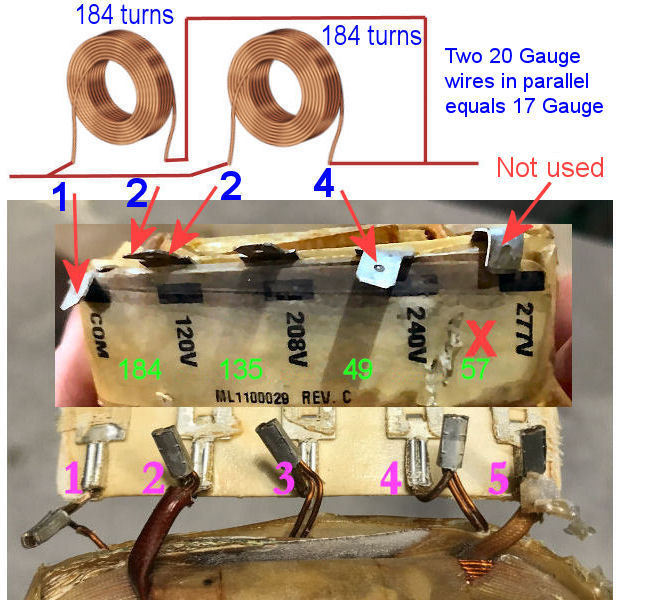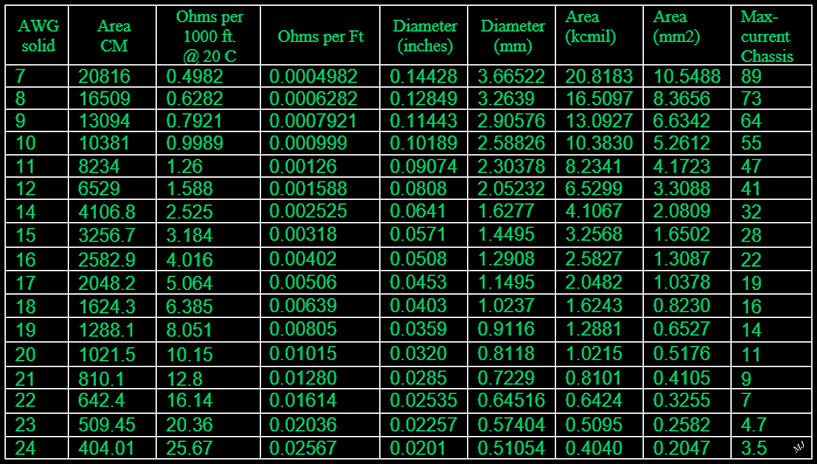Thank you for the photos and the details, that helps a lot.
After doing some analysis of your pictures and numbers, this is what I deducted:
The wire in those coils seem to be 20 Gauge. By separating the wires at the taps, one of those coils can be divided into 4 individual coils.

These are my estimates of the number of turns and resistance of the individual coils if the wire is 20 gauge:
Coil 1, between taps 1 and 2 has 184 turns. Measures 1.42 ohms.
Coil 2, between taps 2 and 3 has 135 turns. Measures 1.05 ohms.
Coil 3, between taps 3 and 4 has 49 turns. Measures .38 ohms.
Coil 4, between taps 4 and 5 has 57 turns. Measures .44 ohms.
Coils 2 and 3 in series equals 184 turns. That is the same as coil 1. GREAT!
Coil 1 can be wired in parallel with 2 and 3 to make one coil and reduce the resistance to .71 ohms. When those two 20 gauge coils are wired in parallel, it is the same as having one coil wound with 17 gauge wire. So if my estimates are correct, those coils can be used.
17 Gauge wire is good for 19 amps. That will give you the capability to output over 900 watts at 48 volts from the alternator. 24 of those 2 x 1 x .5 Neo magnets can produce that much.
If you decide to go with 120 volts AC output by wiring the 2 coils in series, 20 Gauge wire is good for 11 amps. That is good for over 1 Kw alternator, not bad.
You can verify all this by measuring the resistance of the coils and verify the gauge with a caliper. You can measure resistance from tap to tap without having to separate the coils.
Measuring low resistance with a multimeter can be problematic, but the resistances here are not that low. Just make sure that before you measure, short the leads, note the resistance of the leads, and subtract that from the coil resistance.
If my calculations are correct, an alternator with 9 of those 184 turn coils (1 and 2 +3) and 2 magnet rotors with 12 magnets each of the 2 x 1 x .5, will output around 1 Kw.
I calculated output voltages at different RPM and they are as follows:
At 370 RPM with the 2 coils in parallel = 121 Volts AC RMS
At 185 RPM with the 2 coils in series = 121 Volts AC RMS
At 130 RPM with the 2 coils in parallel = 58 Volts DC
Keep in mind that these are open voltages without a load.
You asked if you build the alternator first or the rotor blades. Since you already have all the parts to build the alternator, you build that first. Then calculate the power output and RPM of the alternator. Once you know that, you try to find the best size blades to match that alternator.
I am hoping that some of the experts here jump in and offer some guidance as to the size of the blades once we estimate the parameters of the alternator.
Here is a useful table:

Your wife seem to be typical. Ladies are more concerned with results rather than the details. When she will be able to use the warm pool in late September, she will come around.

Ed